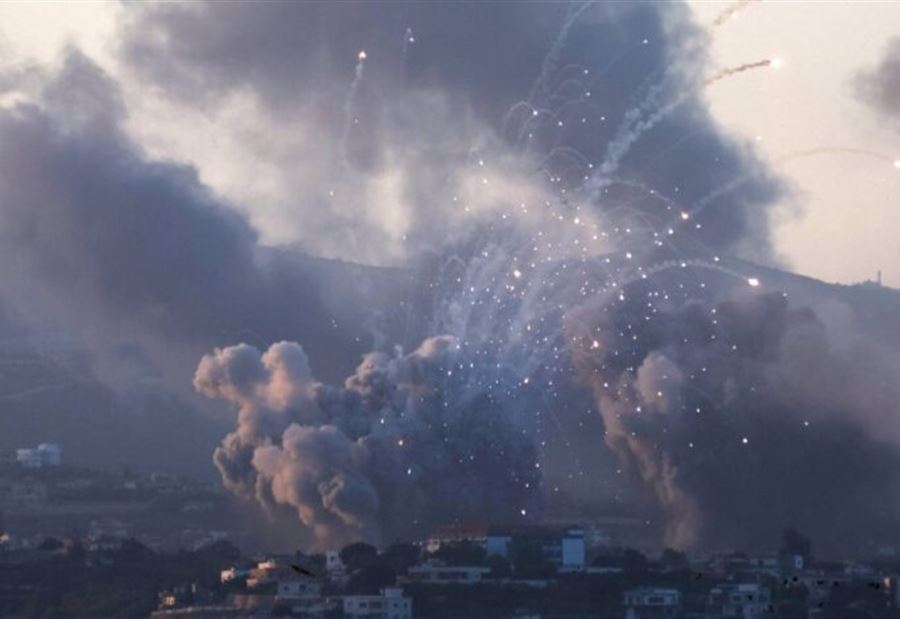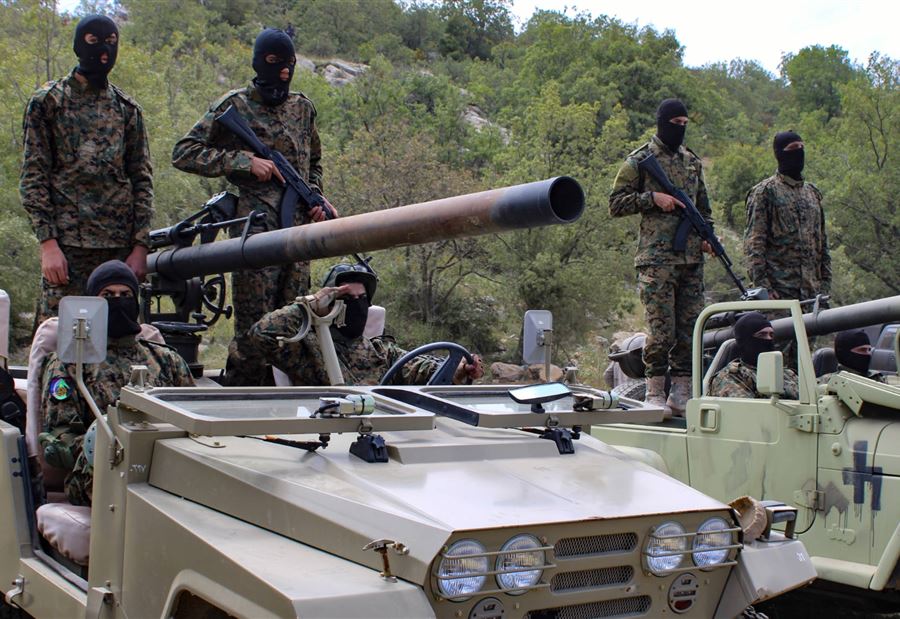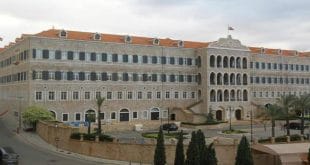حرب 2024 V/S حرب 2006
يُحاول البعض مقارنة الحرب العدوانية على لبنان في العام 2006، والحرب الجارية في العام 2024، فيما هناك اختلاف هائل بين هاتَين الحربَين، اللتَين لا تتشابهان، لا بالشكل ولا بالضمون، ولا بالتقنيات، وخصوصاً أنّ لبنان 2024 لا يُشبه لبنان 2006، فيما الإقتصاد اللبناني 2024 لا يُشبه إقتصاد 2006، واللبنانيّون 2024 لا يُشبهون اللبنانيّين 2006.
لبنان في العام 2024 لا يزال يُواجه أكبر أزمة مالية ونقدية في تاريخ العالم منذ العام 2019، ولم يُبلسم جروحه بعد جرّاء إنفجار 4 آب 2020، أمّا في العام 2006 فكان لبنان يتمتع بإنماء واستثمارات وحركة سياحية تفوق المليون ونصف المليون سائح، ويستقطب الرياديِّين والمستثمرين من العالم.
في الشق الإقتصادي، لبنان في العام 2006 كان يتمتع بناتج محلي يفوق الـ50 مليار دولار، وصولاً إلى نحو 55 ملياراً في العام 2018، فيما اقتصادنا المحلي انخفض إلى نحو 18 ملياراً في العام 2023. ونتوقع إنخفاضاً إلى نحو 13 ملياراً إذا ما استمرّت الحرب. هذا يعني أنّ اقتصادنا قد تدهور وبلدنا افتقر.
على الصعيد المالي والنقدي، في العام 2006، كانت تُقدّر الودائع في المصارف التجارية بنحو 200 مليار دولار، أمّا اليوم فالودائع لا تتخطّى الـ5 مليارات دولار، وقد هُدر وسُرق القرش الأبيض المدّخر لليوم الأسود.
بالإضافة إلى ذلك، لم يَعُد لدينا قطاع مصرفي في العام 2024، لا بل تحوّلت المصارف إلى ما يُسمّى «زومبي بنك»، ليس لها حتى القدرة لتُقرض أي مبلغ، سواء للمواطنين أو للشركات.
أمّا على صعيد الضحايا والجرحى، فهنا أيضاً، المقارنة مستحيلة، ففي العام 2006، دفع لبنان ثمناً 1200 شهيد، و4 آلاف جريح، في 33 يوماً من العدوان الإسرائيلي. أمّا في العام 2024 حتى الآن، فتخطّينا الـ3 آلاف شهيد، و12 ألف جريح، ولا تزال الحرب مستمرة من دون أفق.
الجدير بالذكر، أنّ قسماً كبيراً من هؤلاء الجرحى باتوا معوّقين، وسيحتاجون ليس فقط إلى الإعانة بل إلى المساعدة الإجتماعية لتأمين حاجات العيش، لأنّهم لن يستطيعوا مزاولة أعمالهم.
أمّا في جانب النازحين، ففي العام 2006، قُدّر عددهم بـ700 ألف شخص. أمّا في العام 2024، فتخطينا المليون و400 ألف نازح، مع صعوبة جداً بالعودة إلى أراضيهم وقراهم التي دُمّرت بالكامل.
أمّا حول خسائر البنى التحتية، ففي العام 2006 قُدّرت هذه الخسائر التابعة لمؤسسات الدولة بـ3 مليارات دولار. أما اليوم حتى اللحظة فقد تخطّينا الـ12 ملياراً من خسائر البنى التحتية.
بالنسبة إلى القطاع الصناعي، في العام 2006 بلغت خسائره نحو 200 مليون دولار، فيما هذه الخسائر في العام 2024 فقد تعدّت الملياري دولار، أي 10 أضعاف خسائر العام 2006. بالإضافة إلى ذلك، ازدادت كلفة الإنتاج والتأمين والنقل، وخسر هذا القطاع ثقة زبائنه الدوليِّين.
على الصعيد الزراعي، في العام 2006 قُدّرت خسائر هذا القطاع بنحو 500 مليون دولار. أمّا اليوم حتى الساعة فقد تعاظمت هذه الخسائر بنحو 2,5 مليار دولار، أي 5 أضعاف العدوان القديم.
إنّ التكنولوجيا والذكاء الإصطناعي والأسلحة المستعملة اليوم لا تُشبه أسلحة العام 2006، فالغارات تدمّر بالكامل مباني ومجمّعات وقرى في بضع ثوانٍ، ونحن متّجهون إلى دمار شامل، وخصوصاً في أرضنا الخصبة الجنوب والبقاع.
في المحصّلة، نعيد ونشدّد على أنّ حرب 2024 لا تُشبه 2006، إذ لم يتغيّر فقط لبنان واللبنانيّون، ولم يتغيّر العالم والرؤية فحسب، بل لا شك في أنّ ما نعيشه اليوم هي استراتيجية متفق عليها إقليمياً ودولياً.
بكل موضوعية وشفافية، لقد خسرنا مقوّمات المواجهة والصمود، وخصوصاً مقوّمات إعادة الإعمار. كل يوم يمرّ سيحتاج إلى أكثر من سنة لإعادة الإعمار، وكلّنا ندرك تماماً أنّه ليس لدينا القدرة المالية، وخصوصاً أنّنا خسرنا الثقة والعنفوان والمرونة لإعادة الإعمار، من دون أسس ثابتة.
الحل الوحيد، يَكمن بالمفاوضات الديبلوماسية لبناء سلام مستدام لأولادنا وأحفادنا على المدى الطويل. إنّنا على مفترق طرق، إمّا تتكامل هذه الحرب المدمّرة من دون أفق، ولا فرصة للصمود، وإمّا الاتفاق على رؤية موحّدة باستقلالية الأرض والأبناء والفكر لإعادة البناء للمرّة الأخيرة، وفق رؤية موحّدة وأسس ثابتة.
المصدر: د. فؤاد زمكحل – الجمهورية
Comparison Between the 2006 and 2024 Wars Between Israel and Lebanon: Major Transformations and Their Impact on Lebanon
Introduction
The 2006 and 2024 wars between Israel and Lebanon are significant milestones in the history of Lebanese-Israeli conflict. However, there is a profound difference between these two wars in terms of economic, social, military, and technological aspects. This article offers a detailed comparison between the 2006 and 2024 wars, highlighting the impact of these conflicts on Lebanon across various dimensions and reflecting the major changes that have occurred in Lebanon and its society in recent years.
Lebanon Before 2006: Economic Prosperity and Key Developments
In 2006, Lebanon was experiencing a period of relative prosperity in economic terms. The Gross Domestic Product (GDP) exceeded 50 billion dollars, and the economy was growing rapidly due to both local and foreign investments. The tourism sector was flourishing, with Lebanon attracting over 1.5 million tourists annually. Lebanese banks held deposits exceeding 200 billion dollars, and the Lebanese banking sector was one of the most advanced in the region.
However, the 2006 war abruptly and swiftly disrupted this growth, causing extensive damage to infrastructure and impacting the Lebanese economy for years to come.
Lebanon After 2024: A Deep Financial Crisis and Unprecedented War
In 2024, Lebanon is facing its largest financial and monetary crisis in modern history. The Lebanese economy is in deep recession, with the GDP shrinking significantly to around 18 billion dollars in 2023. This is expected to decline further to approximately 13 billion dollars if the war continues. Lebanon no longer enjoys the economic strength it once had, and it has become a country that lacks the capacity to address its financial and social crises.
The banking sector, once a cornerstone of Lebanon’s economy, has also deteriorated. Deposits in Lebanese commercial banks have plummeted from 200 billion dollars to only around 5 billion dollars, and banks have become what is known as “zombie banks,” incapable of providing loans to citizens or businesses.
The Difference in Human Losses: The 2006 vs. 2024 Wars
In the 2006 war, Lebanon lost about 1,200 martyrs and 4,000 injured during the 33 days of Israeli aggression. However, in 2024, Lebanon has already surpassed 3,000 martyrs and over 12,000 injured, with the war still ongoing and no clear end in sight. The situation is not just about numbers; the long-term consequences for those injured are significant. Many of them have become permanently disabled and will require social aid for their livelihood, as they can no longer work.
As for the displaced persons, in 2006, their number was estimated at around 700,000. By 2024, however, this number has exceeded 1.4 million, with a significant challenge to return to their homes and villages, which have been completely destroyed.
Destruction of Infrastructure and Economic Losses: Comparing 2006 and 2024
In 2006, the damage to Lebanon's infrastructure was estimated at around 3 billion dollars. However, in 2024, the destruction has already exceeded 12 billion dollars, encompassing roads, bridges, hospitals, and schools. This has exacerbated the humanitarian and economic crisis in Lebanon.
Regarding the industrial sector, losses in 2006 were estimated at 200 million dollars. In contrast, losses in 2024 have surpassed 2 billion dollars, 10 times greater than the losses of 2006. The cost of production, insurance, and transportation has skyrocketed, and the sector has lost the confidence of international clients.
The agricultural sector, which saw losses of around 500 million dollars in 2006, has seen these losses escalate to 2.5 billion dollars by 2024, five times the losses of 2006.
Technology and Modern Weaponry: A Vast Difference Between the Wars
The technology used in the 2024 war is drastically different from that of 2006. In 2006, weapons were more conventional, while in 2024, we are witnessing the use of advanced drones and artificial intelligence, leading to the complete destruction of infrastructure within seconds. Aerial bombardments today completely destroy buildings and complexes in the south and Bekaa region, contributing to the overall devastation.
Military and Political Strategy: Evolution and Change
A major difference between the 2006 and 2024 wars lies in the military and political strategies employed. In 2006, Israel was mainly facing Hezbollah alone, but in 2024, the war has expanded on a broader scale, with regional and international interventions, with major global powers playing a role in directing the conflict.
Lebanon in 2024 is vastly different from the Lebanon of 2006. Its economy has collapsed, its infrastructure is destroyed, and the Lebanese people are suffering from increasing crises. The realities have changed completely, and military solutions seem ineffective.
Conclusion: Diplomatic Solutions and Negotiation
The significant changes Lebanon has undergone are not limited to the wars themselves; they extend to the internal conditions of Lebanon across various sectors. Lebanon today desperately needs political and diplomatic solutions to establish lasting peace and rebuild the country. The only path forward for the Lebanese people is to engage in negotiations to achieve sustainable peace, ensuring a better future for future generations.
Lebanon must focus on rebuilding its infrastructure, restoring trust, and strengthening its resilience in the face of future challenges. Peace is the only solution to rebuild Lebanon once again.
Translated by economyscopes team
 سكوبات عالمية إقتصادية – EconomyScopes إجعل موقعنا خيارك ومصدرك الأنسب للأخبار الإقتصادية المحلية والعربية والعالمية على أنواعها بالإضافة الى نشر مجموعة لا بأس بها من فرص العمل في لبنان والشرق الأوسط والعالم
سكوبات عالمية إقتصادية – EconomyScopes إجعل موقعنا خيارك ومصدرك الأنسب للأخبار الإقتصادية المحلية والعربية والعالمية على أنواعها بالإضافة الى نشر مجموعة لا بأس بها من فرص العمل في لبنان والشرق الأوسط والعالم




